How ABA therapy can help children with anxiety and fear
August 1, 2025
Unlocking Confidence: The Role of ABA in Alleviating Childhood Anxiety
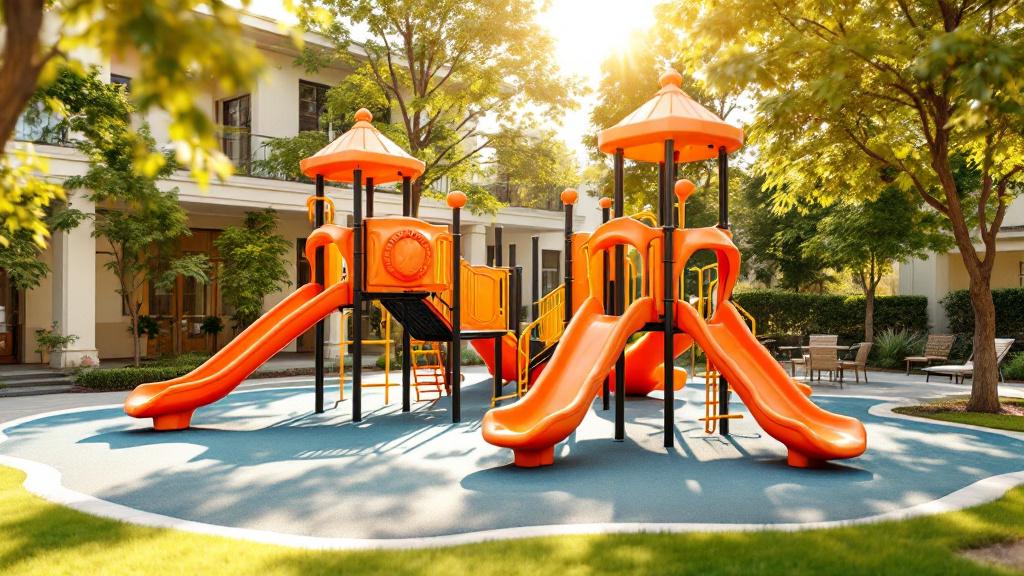
Understanding ABA Therapy’s Impact on Childhood Anxiety and Fear
Applied Behavior Analysis (ABA) therapy, traditionally renowned for its effectiveness in supporting children on the autism spectrum, also plays a vital role in managing anxiety and fear. Through structured, evidence-based techniques, ABA helps children recognize triggers, develop coping skills, and modify anxiety-related behaviors. This comprehensive approach offers hope for improving not just behavioral responses but overall quality of life for anxious children and their families.
Foundations of ABA Therapy in Anxiety Management
What are the methods and techniques used in ABA therapy to manage anxiety and fear?
ABA (Applied Behavior Analysis) therapy uses a variety of behavior modification strategies to help children manage anxiety and fear. One primary technique is exposure therapy, which involves gradually exposing children to feared stimuli or situations in a safe, controlled environment. This gradual process, called systematic desensitization, helps reduce the child's physiological and emotional responses to anxiety-provoking triggers.
Relaxation training is another important component. Techniques such as deep breathing, progressive muscle relaxation, and visualization are taught to help children calm their bodies when faced with anxiety. These methods work alongside behavioral principles like classical and operant conditioning, which target avoidance behaviors and distorted threat perceptions.
While ABA mainly focuses on observable behaviors, it can be integrated with cognitive-behavioral approaches to address unhelpful thoughts related to anxiety. The structured nature of ABA, emphasizing step-by-step reinforcement and gradual exposure, aims to build confidence, decrease avoidance, and ultimately lessen anxiety symptoms.
Overall, ABA employs a science-based, systematic approach that combines exposure, relaxation, and positive reinforcement to support children in overcoming fears and managing stress more effectively.
How does ABA therapy teach coping skills to children with anxiety?
Teaching coping skills is a central goal of ABA therapy for children experiencing anxiety. Therapists customize techniques based on each child's unique needs and anxiety triggers. One effective strategy is gradual exposure, where children face anxiety-inducing situations step by step, learning to tolerate and eventually manage their reactions.
The "bully in the brain" model is a creative technique used to help children confront internal fears. In this method, children name and talk to their internal fears, learning that these fears are not dangerous and can be challenged verbally. Reinforcement plays a vital role here, encouraging children to practice coping strategies regularly.
In addition, ABA incorporates emotional regulation skills such as recognizing feelings, practicing mindfulness, and using relaxation exercises. Visual aids, role-playing, and self-reinforcement are tools used to reinforce these coping mechanisms.
The overall aim is to empower children with practical tools such as deep breathing, visualization, and problem-solving techniques. These skills help children handle anxiety triggers confidently and adaptively across different social and environmental settings.
Why is individualized treatment planning important in ABA for anxiety?
Every child experiencing anxiety presents differently, which makes individualized treatment plans crucial. ABA therapy involves a detailed analysis of the child's specific triggers, behaviors, and environmental factors.
By tailoring interventions to the child's unique profile, therapists can develop strategic plans that target specific fears and avoidance behaviors. This personalized approach ensures that interventions are relevant, effective, and engaging for the child.
Individualized plans often include graded exposure to feared stimuli, custom-crafted reinforcement schedules, and specific coping skills training suited to the child's developmental level and environment.
Parental involvement is also integral to success, with therapists training parents on how to support their child's progress at home and in different settings. This consistency helps children generalize their new skills beyond therapy sessions.
Ultimately, personalized treatment fosters motivation, addresses unique challenges, and enhances the overall impact of ABA therapy in reducing anxiety.
| Aspect | Description | Additional Details |
|---|---|---|
| Techniques | Exposure therapy, relaxation training, reinforcement | Gradual exposure, deep breathing, visualization |
| Teaching coping skills | Desensitization, emotional regulation, modeling | "Bully in the brain" model, role-playing, visual aids |
| Individual plans | Tailored to triggers, behaviors, environment | Parental involvement, graded steps, custom reinforcement |
This comprehensive, customized approach in ABA enables children to learn practical skills, confront fears safely, and improve their overall quality of life by reducing anxiety symptoms.
Recognizing and Understanding Anxiety in Children with Autism
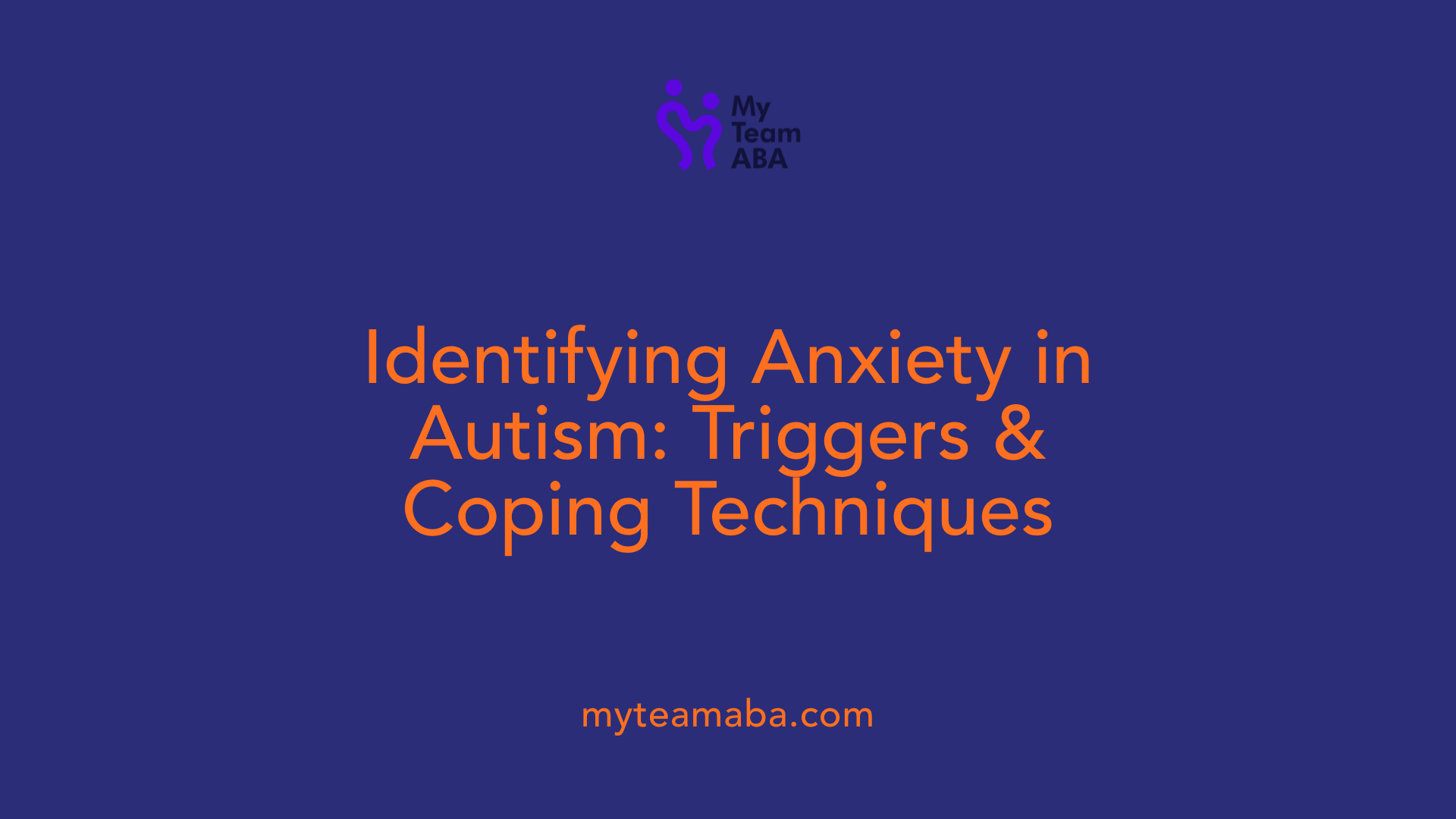
How can ABA therapy help identify triggers and teach coping strategies?
Applied Behavior Analysis (ABA) is a structured, evidence-based approach that focuses on understanding and modifying behavior. One of its main benefits for children with autism is its ability to help reduce anxiety by analyzing triggers and implementing tailored strategies. Therapists observe when anxiety symptoms arise—such as increased heart rate, sweating, or avoidance behaviors—and then work to identify specific causes or stimuli.
Once triggers are identified, ABA therapy teaches children coping skills like deep breathing, visualization, and progressive muscle relaxation. These techniques help children manage their reactions when faced with anxiety-provoking situations. Additionally, ABA incorporates behavioral activation by encouraging positive reinforcement, motivating children to face fears and practice new skills.
What techniques are used in ABA therapy to address anxiety?
ABA employs several targeted strategies to reduce anxiety symptoms. Among the most effective are:
- Cognitive Restructuring: Helping children reframe negative thoughts about feared situations.
- Desensitization: Systematically exposing children to feared stimuli in a controlled way to lessen their stress response over time.
- Gradual Exposure: Introducing feared stimuli slowly so that children build tolerance and confidence.
- Behavioral Activation (BA): Increasing positive reinforcement for engaging in coping or social activities.
- Relaxation and Coping Skill Teaching: Skills such as deep breathing, visualization, mindfulness, and self-reinforcement.
By combining these techniques, ABA therapy aims to reduce avoidance behaviors and build resilience.
How does gradual exposure work in reducing anxiety?
Gradual exposure is central to ABA in treating anxiety. It involves carefully increasing a child's contact with anxiety-inducing stimuli over multiple sessions. For example, a child afraid of loud noises might first listen to recorded sounds at low volume, then gradually increase the volume as they demonstrate comfort.
This step-by-step process helps children learn that their fears are manageable and that their reactions can be controlled. The success of exposure therapy depends on patience and consistent reinforcement, as children learn to cope without resorting to avoidance.
How important is parental involvement in ABA therapy?
Parents play a crucial role in the effectiveness of ABA for anxiety. Therapists train parents to reinforce coping strategies and manage triggers at home and in different environments. Parental involvement ensures that skills learned during therapy generalize beyond clinical sessions, leading to better outcomes.
Moreover, active parent participation creates a supportive environment, which encourages children to practice new behaviors in various settings—school, community, and home—building confidence and independence.
What are the benefits of using ABA therapy for children with anxiety?
ABA therapy offers numerous advantages, including:
- Improved coping skills to handle anxiety-provoking situations.
- Reduced avoidance behaviors and better engagement in social interactions.
- Increased independence in managing daily routines.
- Enhanced academic performance by reducing anxiety-related disruptions.
- Overall improvement in quality of life and emotional well-being.
Because ABA is personalized for each child, treatments are designed to align with individual needs and goals, making success more achievable.
How can ABA strategies help with anxiety-related behaviors?
Children with autism often display behaviors such as hand wringing, pacing, or repetitive actions as responses to anxiety. ABA strategies focus on identifying what triggers these behaviors and replacing them with more functional coping mechanisms.
Behavioral interventions may include role-playing, social skills training, and mental rehearsal activities like visualization. For instance, children can learn to name and confront their internal fears, reducing the need for compulsive behaviors.
Are ABA techniques effective for conditions beyond autism?
Yes. While primarily used for autism, ABA strategies have been shown effective in treating other anxiety disorders, including phobias and PTSD. Techniques such as exposure therapy and behavioral activation are applicable across various anxiety-related states.
What outcomes can be expected from ABA therapy for anxiety?
Children working with ABA can expect a range of positive results:
- Better recognition of internal and external triggers.
- Development of healthier coping mechanisms.
- Reduced physical symptoms like rapid heartbeat or shortness of breath.
- Increased participation in social and daily activities.
- Enhanced capacity to manage stress independently.
Overall, ABA aims to empower children with skills to face and manage their fears, leading to a more comfortable and less stressful daily life.
Behavioral Modification Strategies to Reduce Anxiety and Fear
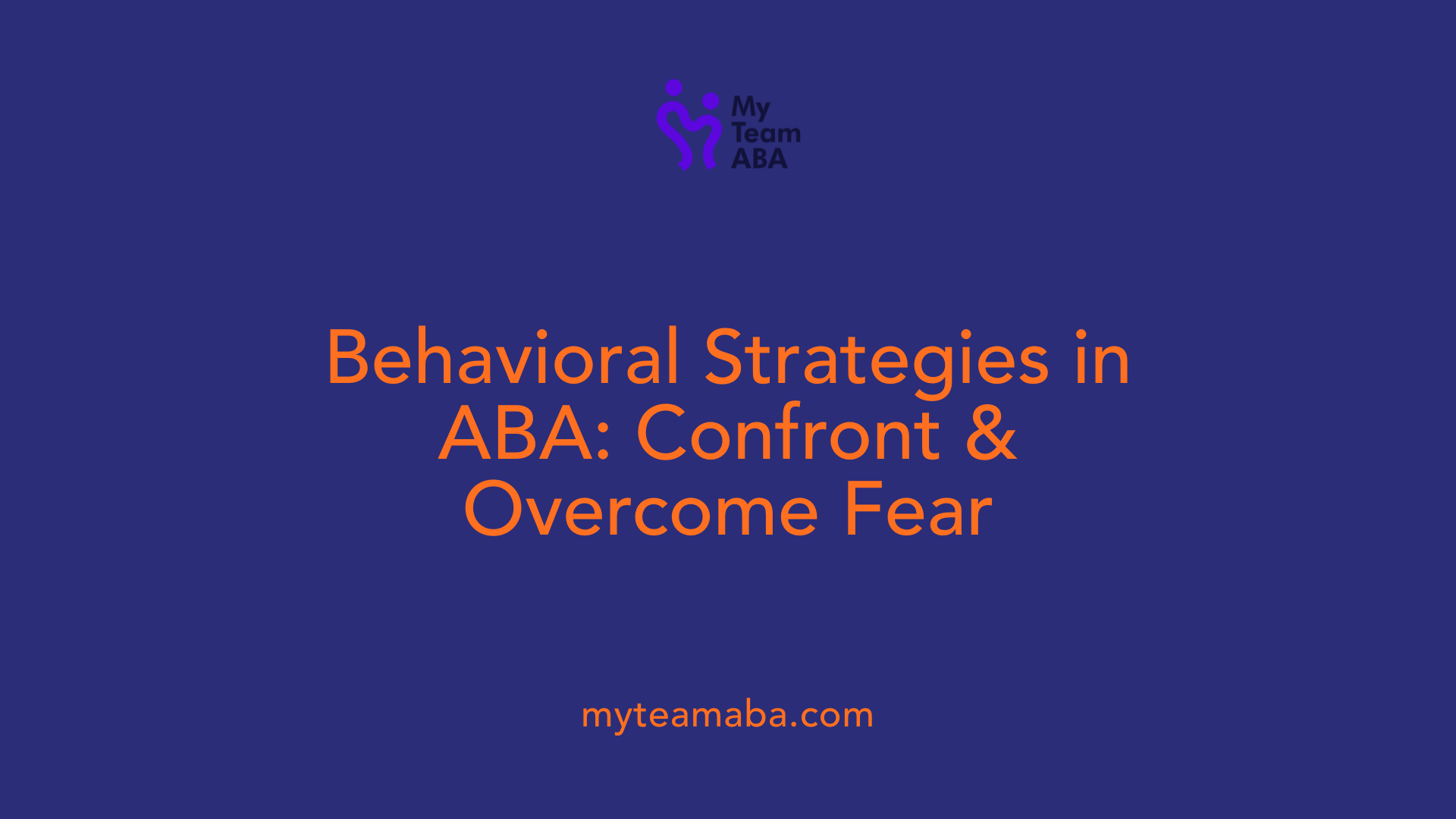
How can behavioral modification in ABA therapy reduce anxiety and fear?
Behavioral modification within ABA therapy plays a vital role in helping children manage and reduce anxiety and fear. By harnessing the principles of positive reinforcement, ABA techniques teach children to respond differently to anxious stimuli. For example, children are encouraged to exhibit calm and confident behaviors through rewards and praise, which promotes a shift in their reaction patterns.
One of the main methods used is graduated exposure or desensitization. This process involves slowly and systematically exposing children to feared situations or stimuli in controlled environments. Over time, this gradual confrontation diminishes the child's stress response, weakening the association between the stimulus and fear. Through repeated, controlled exposure, children learn to tolerate and manage previously overwhelming situations.
Behavioral interventions also incorporate strategies such as cognitive restructuring, which helps children reframe negative thoughts associated with their fears. Visual supports and social skills training further aid children in understanding and coping with anxiety-inducing scenarios.
Functional behavior assessments (FBAs) are crucial in this process as they identify the reasons behind specific anxiety-related behaviors. By understanding what maintains these behaviors—whether avoidance, escape, or attention-seeking—therapists can develop individualized plans. These tailored interventions focus on reducing the functions of anxiety behaviors by replacing them with functional, adaptive responses.
Reinforcing calm and confident behaviors is essential. For instance, children are rewarded when they successfully face a feared stimulus or employ coping strategies like deep breathing, progressive muscle relaxation, or visualization. Such reinforcement builds confidence and reduces avoidance behaviors that typically exacerbate anxiety.
In addition to exposure, ABA incorporates other techniques like mental rehearsal, role-playing, and mindfulness exercises. These strategies help children develop internal coping mechanisms, enabling them to better manage symptoms such as rapid heartbeat, shortness of breath, or repetitive behaviors.
Overall, behavioral modification in ABA creates an environment where children learn to regulate their emotions, respond adaptively to fears, and gradually increase their capacity to handle anxiety-provoking situations, leading to improved daily functioning and quality of life.
The Role of Gradual Exposure and Desensitization in Anxiety Reduction

What are the principles of gradual exposure and desensitization?
Gradual exposure and desensitization are behavioral techniques used to help children reduce anxiety responses by facing their fears in manageable steps. The core idea is that repeated, controlled exposure to a feared stimulus can weaken the fear response over time, leading to decreased avoidance and increased calmness. This approach relies on conditioning principles, where the child learns to associate the previously anxiety-provoking stimuli with neutral or positive outcomes instead of fear.
During desensitization, the child is introduced to anxiety triggers gradually, starting with less intimidating situations and moving towards more challenging ones. Relaxation techniques are often incorporated at each step to help the child stay calm. The goal is to promote a sense of mastery and safety, which reduces the physiological and emotional responses linked to anxiety.
How are desensitization techniques applied within ABA therapy?
In ABA therapy, desensitization is carefully planned and individualized to suit each child's needs. Therapists begin by identifying specific anxiety triggers through behavioral analysis, observing behaviors such as hand wringing, pacing, or repetitive actions that signal anxiety.
Once triggers are identified, the therapist develops a hierarchy of exposure activities, starting from least to most anxiety-provoking. For example, a child afraid of social situations might start with watching peers interact from a distance before gradually participating in group activities.
Throughout the process, therapists use positive reinforcement to encourage coping behaviors and bravery. Techniques like role-playing, mental rehearsal, and visual aids are employed to prepare the child at each stage. Over time, these structured exposures help the child reframe their perceptions and diminish their fear responses.
What are the benefits of graduated exposure for children?
Graduated exposure offers numerous benefits. It helps children confront fears without becoming overwhelmed, fostering a sense of control and confidence. As children repeatedly face and manage anxiety-inducing situations, their avoidance behaviors decrease.
This method also promotes emotional resilience, allowing children to learn that situations they once found terrifying are manageable. The gradual nature ensures they are not overwhelmed, increasing the likelihood of success and sustained progress.
Furthermore, this approach improves social interactions, academic participation, and independence, enhancing the child's overall quality of life. It also empowers parents and caregivers by providing clear strategies to support their child's progress at home.
| Aspect | Details | Additional Notes |
|---|---|---|
| Techniques Used | Exposure, systematic desensitization, relaxation training | Based on behavioral principles and integrated with cognitive strategies |
| Application Methods | Hierarchical exposure, role-play, visual aids, reinforcement | Customizable to each child's fears and developmental level |
| Benefits | Reduced avoidance, increased confidence, emotional resilience | Leads to better social and academic functioning |
ABA therapy’s structured, evidence-based framework creates a supportive environment for children to overcome anxiety. By systematically addressing fears using these methods, children can develop healthier coping mechanisms, enabling them to engage more fully in daily activities and social interactions.
Developing Self-Regulation and Emotional Resilience
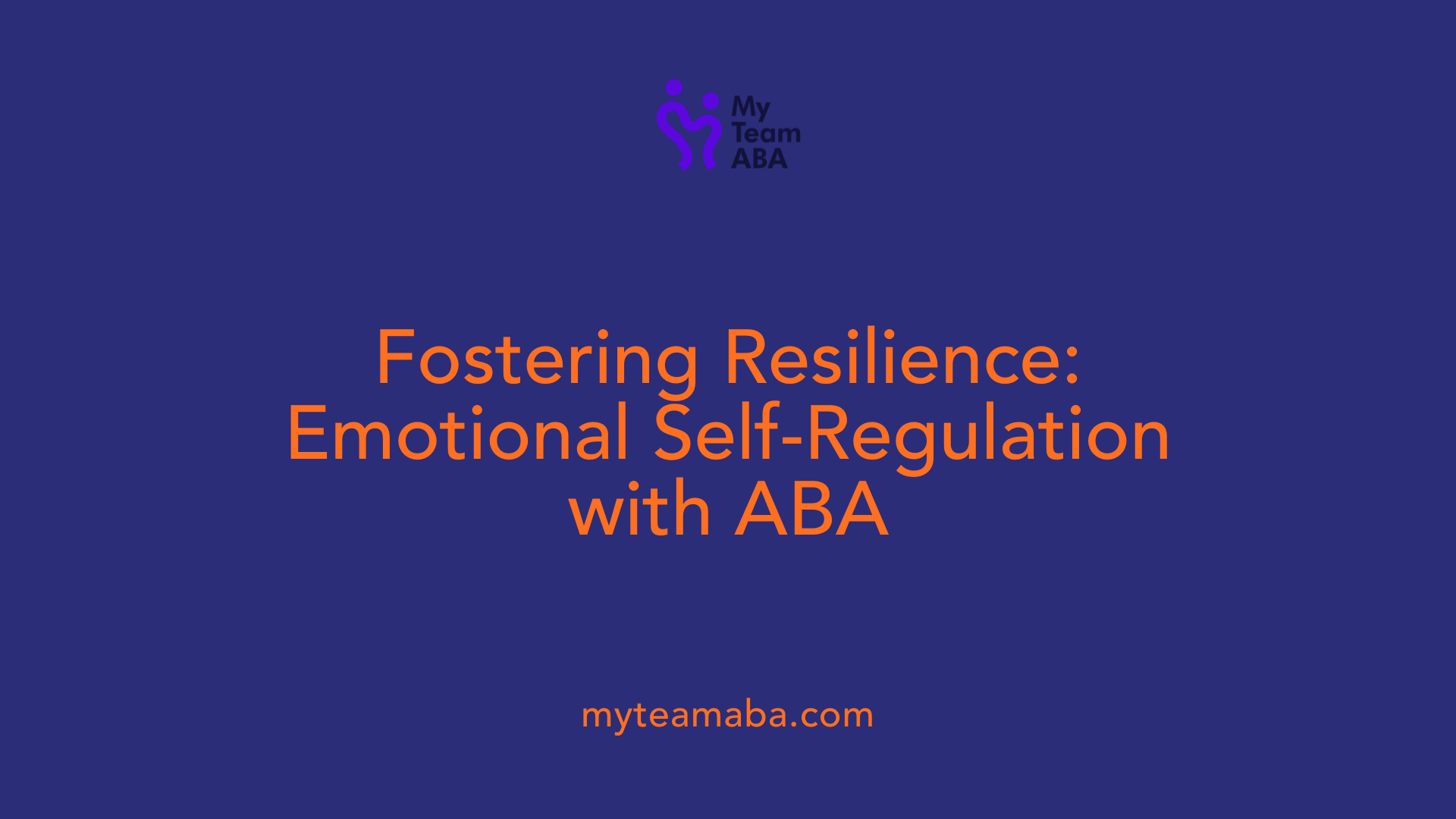
How can ABA therapy help children with anxiety and fear?
ABA (Applied Behavior Analysis) therapy plays a vital role in reducing anxiety symptoms in children by analyzing triggers and modifying behaviors associated with fear. It helps children recognize internal and external cues that lead to anxiety, such as elevated heart rate or avoidance behaviors, and teaches them alternative coping strategies. Techniques like gradual exposure, which involves systematically facing fears in controlled settings, diminish avoidance and promote extinction of anxiety responses.
ABA uses positive reinforcement to encourage children to employ these new skills, such as deep breathing or visualization, making the process engaging and rewarding. This structured approach not only alleviates anxiety but also enhances social interactions and increases independence. Therapy is tailored to each child's needs, helping them stay motivated and focused on their goals, which ultimately improves their quality of life.
Techniques for teaching emotional regulation
Teaching children to manage their emotions is central to ABA therapy. Techniques include identifying triggers, practicing self-reinforcement, and applying mindfulness practices. Self-reinforcement involves rewarding oneself for successfully applying coping skills, which strengthens these behaviors over time.
Mindfulness activities, such as focused breathing or progressive muscle relaxation, help children stay present and reduce stress. Mental rehearsal and role-playing are also used to prepare children for challenging situations, helping them build confidence in managing their emotions.
Self-reinforcement and mindfulness practices
Self-reinforcement is a powerful tool within ABA therapy that encourages children to independently recognize and reward positive behavior. For example, a child might earn praise or a small reward after successfully calming themselves during a stressful event.
Mindfulness practices support emotional regulation by teaching children to observe their feelings without immediate reaction. Techniques such as visualization and distraction are introduced, enabling children to better understand and control their emotional responses.
Building resilience and confidence in children with anxiety
Building resilience involves helping children develop the skills and confidence to face challenges calmly. ABA strategies focus on gradually exposing children to anxiety-provoking situations in a controlled way, reinforcing their successes along the way.
Therapists work closely with parents to ensure these skills are practiced consistently across various settings, enhancing generalization. As children learn to cope with stressors more effectively, they build resilience, which reduces overall anxiety and fosters independence.
| Approach | Focus Area | Practical Techniques | Expected Outcomes |
|---|---|---|---|
| Behavior Modification | Identifying triggers and modifying responses | Desensitization, systematic exposure, role-playing | Reduced avoidance, increased coping skills |
| Skills Training | Teaching relaxation and emotional regulation strategies | Deep breathing, visualization, progressive muscle relaxation | Better emotional control, decreased anxiety |
| Reinforcement Strategies | Encouraging positive behaviors and self-management | Self-reinforcement, praise, reward systems | Increased motivation, confidence |
| Parental Involvement | Generalizing skills across environments | Home training, coaching, consistent routines | Enhanced skill transfer, sustainable progress |
Incorporating these methods within a structured and individualized ABA approach enables children to develop stronger emotional regulation and resilience. This comprehensive focus not only reduces anxiety but also supports children in building a more confident, calmer outlook as they navigate daily life.
Enhancing Outcomes Through Parent Involvement and Generalization
What are some educational insights for parents and caregivers on using ABA to address anxiety?
Parents and caregivers play a vital role in the success of ABA therapy for children with anxiety. One of the primary strategies involves creating predictable and structured environments that help reduce uncertainty and stress for the child. Using visual supports, such as schedules or social stories, allows children to better understand what to expect, which can decrease anxiety levels.
Incorporating gradual desensitization and systematic exposure techniques are effective in helping children confront their fears safely. For instance, therapists might guide parents to expose their children to anxiety-provoking stimuli in controlled steps, reinforcing positive coping responses such as deep breathing, visualization, or other relaxation methods.
Parent training sessions are essential for teaching effective reinforcement strategies. Consistent reinforcement of coping skills at home helps children apply what they learn in therapy sessions to everyday situations, promoting skill generalization across different settings, whether at home, school, or in social environments.
Functional assessments of triggers are a core component. By understanding specific sources of anxiety through observing behaviors and analyzing the environment, parents can assist in developing individualized interventions tailored to their child's needs.
Furthermore, tools like social stories and visual aids make abstract concepts more concrete, aiding children in understanding and managing their emotions. When suitable, combining ABA techniques with cognitive-behavioral approaches—such as teaching children to identify and challenge irrational fears—can enhance resilience.
Overall, fostering collaboration between therapists and parents offers a comprehensive approach. Parents equipped with strategies for reinforcement and generalization not only reinforce coping skills but also help their children navigate anxiety more effectively in diverse and dynamic real-life contexts.
Conclusion: Building a Brighter Future for Anxious Children
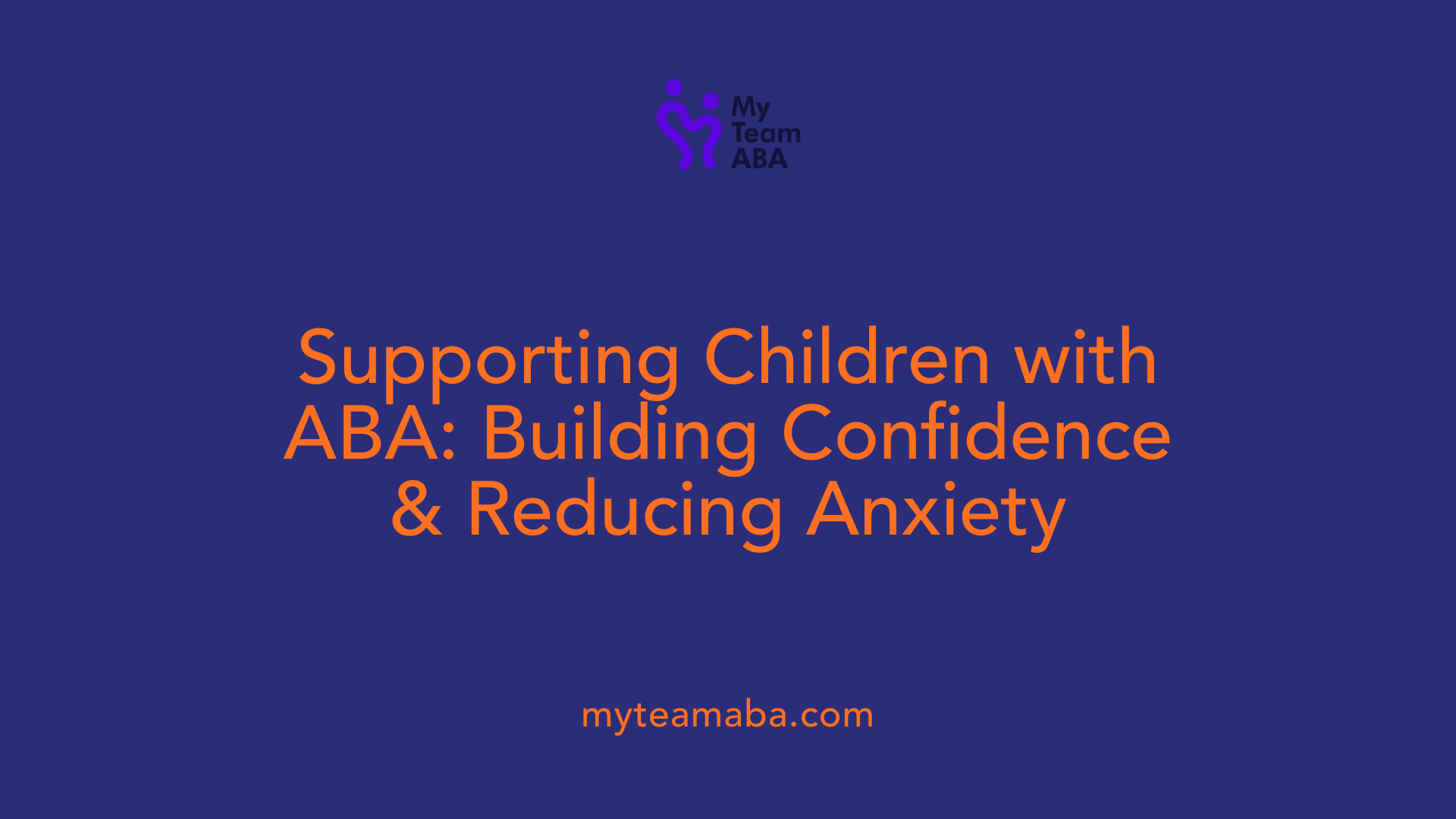 ABA therapy offers a structured, evidence-based approach that can greatly benefit children struggling with anxiety. By focusing on understanding and modifying behaviors, ABA helps children identify triggers—both internal and external—that contribute to their anxiety. It then employs techniques such as gradual desensitization, behavioral activation, and coping skill training to reduce avoidance behaviors and promote healthier responses.
ABA therapy offers a structured, evidence-based approach that can greatly benefit children struggling with anxiety. By focusing on understanding and modifying behaviors, ABA helps children identify triggers—both internal and external—that contribute to their anxiety. It then employs techniques such as gradual desensitization, behavioral activation, and coping skill training to reduce avoidance behaviors and promote healthier responses.
One of the core strategies in ABA is behavioral exposure, where children gradually face their fears in a controlled environment. This process, combined with positive reinforcement, encourages children to employ new coping mechanisms like deep breathing, visualization, and self-reinforcement, which can significantly diminish anxiety symptoms.
Key components of effective ABA intervention include routine assessments to tailor approaches to each child’s needs, parental involvement to support skill generalization across different settings, and consistent reinforcement of positive behaviors. Techniques such as role-playing, mental rehearsal, and mindfulness practices are also integrated to help children manage physiological symptoms of anxiety, like increased heart rate or shortness of breath.
The role of family and caregivers is vital in ensuring successful outcomes. Therapists provide guidance and training to parents, empowering them to reinforce progress at home and in everyday life. This collaborative effort helps children practice coping strategies consistently, leading to increased social engagement, independence, and improved academic performance.
Overall, ABA therapy’s benefits extend beyond reducing anxiety symptoms. They include better social interactions, enhanced problem-solving skills, and increased confidence, all contributing to a happier, less stressful life. Its adaptable nature makes it suitable for addressing a variety of anxiety-related challenges, making it a valuable resource for children and families navigating these issues.
Fostering Growth and Resilience for Children Facing Anxiety
ABA therapy offers a powerful, evidence-based approach to understanding and managing anxiety and fear in children. By analyzing triggers, teaching coping skills, and reinforcing positive behaviors, ABA creates a structured environment in which children can confront their fears, develop emotional resilience, and lead more confident, less stressful lives. Parental involvement and consistent application of therapy strategies across settings are key to maximizing success. With tailored interventions and ongoing support, children can not only reduce their anxiety but thrive socially, academically, and emotionally, paving the way for a brighter, more hopeful future.
References
- Can ABA Therapy Help with Anxiety? In Many Cases, Yes
- ABA Therapy for Managing Anxiety in Children in Atlanta
- Autism and Anxiety: A Comprehensive Guide to How ABA Helps
- Applied Behavior Analysis in Treating Anxiety Disorders
- Can ABA Therapy Help with Anxiety?
- treatment of anxiety in individuals with autism spectrum disorders
- Autism and Anxiety: A Comprehensive Guide to How ABA Helps
- Behavioral Therapy for Treating Anxiety - MentalHealth.com
